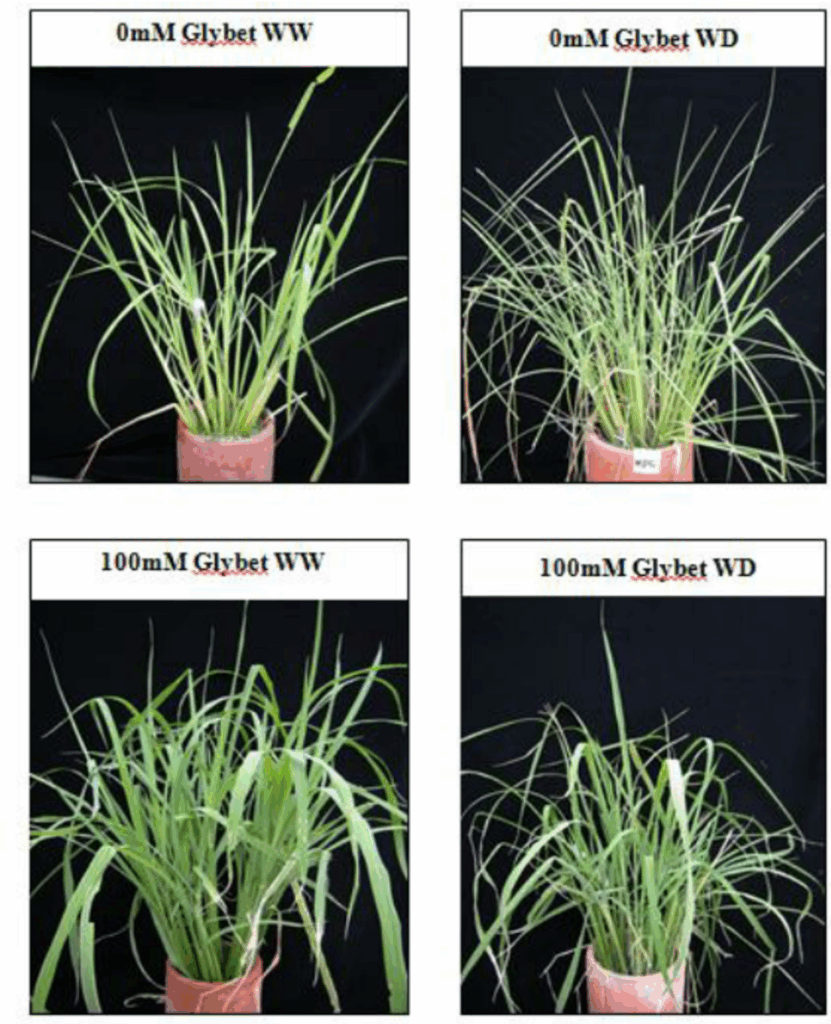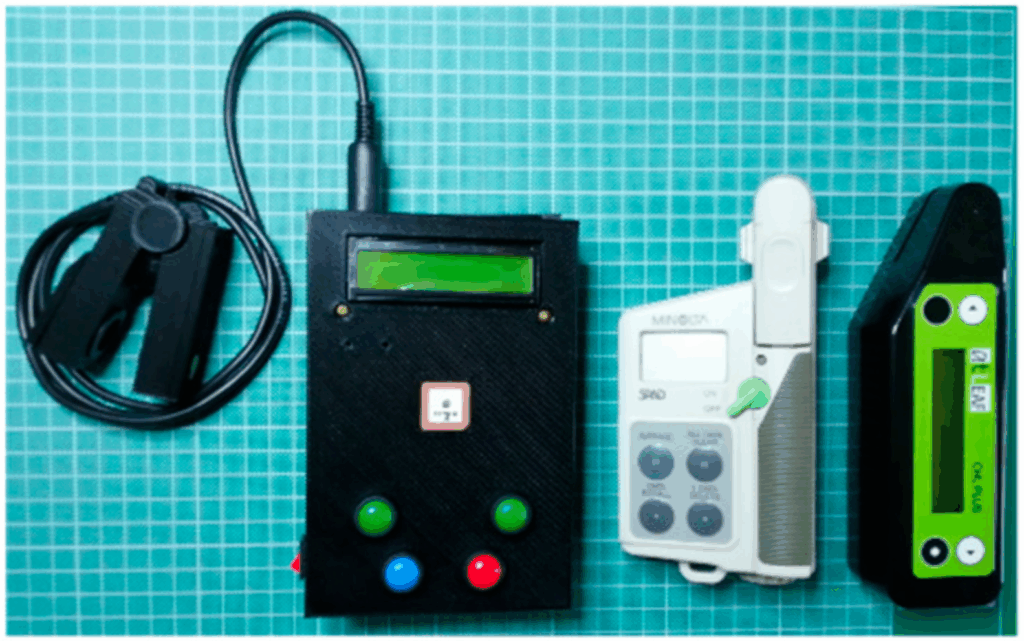Using Glycine Betaine as a Biostimulant
Glycine betaine is a biostimulant that has been explored for stress mitigation and quality enhancement in hydroponic and soilless culture. However, there is substantial confusion about effective concentrations, application methods, and which crops actually benefit. In this post I want to address the most common questions about using glycine betaine, based on what the peer-reviewed literature actually shows for different crops and growing systems.

What is glycine betaine and why use it?
Glycine betaine is a quaternary ammonium compound that acts as a compatible solute in plants. Most agronomic crop species do not synthesize adequate amounts naturally, which is why exogenous applications have been studied (1). When applied to plants, glycine betaine functions as an osmoprotectant, maintaining cellular water balance and protecting photosynthetic machinery under stress (2). It stabilizes proteins and membranes, reduces oxidative damage, and can enhance photosynthetic efficiency.
In controlled environment hydroponics, glycine betaine offers benefits beyond basic stress protection. Studies show it can modify nitrogen metabolism, reduce nitrate accumulation in leafy greens, and alter mineral uptake patterns (3). However, responses are highly dose-dependent and crop-specific. Application parameters need to match your production goals or you risk reducing yields instead of improving them.
Should you apply glycine betaine to leaves or roots?
Application method determines both efficacy and risk. Foliar applications are lower risk but require repeated treatments. Root applications in recirculating hydroponics can deliver specific quality benefits but require precise dosing and timing.
For foliar work, concentrations between 500 and 2,500 ppm are common in the literature, with timing adjusted to crop growth stage and stress exposure. In lettuce under water stress, 700 ppm applied three times during the growing cycle (at 20, 35, and 45 days after transplant) improved yield and water use efficiency compared to controls (4). For peppers experiencing combined low temperature and low light stress, 2,340 ppm improved photosynthetic parameters and reduced oxidative damage (5). Lower concentrations in that same pepper trial were less effective, showing a clear dose threshold.
Root application through nutrient solutions requires more precision but offers different advantages. In commercial NFT lettuce production, adding glycine betaine at 1,170 ppm to the nutrient solution reduced leaf nitrate content by more than 29% while increasing dry matter and improving amino acid profiles (3). The treatment was applied during the final 6 days before harvest, with a second application needed 4 days after the first to maintain effective concentrations. The glycine betaine disappeared from solution within 3-5 days as plants took it up or microorganisms metabolized it.
An important limitation of root applications is growth reduction. While nitrate control and quality improvements were achieved, fresh weight was lower at certain sampling points. If your production system is optimized for maximum fresh weight yield, root applications need careful consideration.
What works for specific crops?
Lettuce
Lettuce shows reliable responses to both application methods. For foliar applications targeting stress mitigation, 700 ppm at 20, 35, and 45 days after transplanting improved yields under both normal and deficit irrigation (4). Water use efficiency increased and quality was maintained even under stress.
For root applications focused on nitrate reduction in NFT systems, you need higher concentrations than you might expect. Single applications at 470 or 880 ppm showed weak responses. The effective protocol uses 1,170 ppm applied twice at 4-day intervals, which reduced nitrate substantially and increased total amino acid content (3). Fresh weight was slightly reduced at certain harvest times but dry matter percentage increased, which can extend shelf life. If your market discounts product for high nitrate content, this treatment has commercial validation.
Tomato
Tomato responses depend heavily on the stress type and application method. Foliar application of 1,170 ppm applied at 2 and 6 weeks from transplanting increased marketable fruit yield by about 13% under deficit irrigation in field trials (6). The treatment improved chlorophyll content and leaf water status under water stress.
However, the picture is not entirely positive. Some studies found foliar glycine betaine reduced tomato growth under salt stress instead of improving it (7). This suggests variety-specific responses or fundamental differences in how glycine betaine interacts with different stress types. The evidence is stronger for water stress applications than for salt stress in tomato.
Pepper
Pepper seedlings under combined low temperature and low light stress responded to foliar glycine betaine at 2,340 ppm. This concentration improved photosynthetic parameters, reduced membrane damage, and enhanced antioxidant defenses (5). Lower concentrations in the same study were less effective, showing a threshold effect.
For cotton (relevant as a reference for other crops) under salt stress, 585 ppm proved optimal for maintaining stomatal function and photosynthesis, with 880 ppm showing diminishing returns (8). This demonstrates that more is not always better. Finding the optimal concentration requires testing for your specific crop and conditions.
Strawberry
In soilless strawberry production, 1,170 ppm increased fruit weight and yield per unit area (9). Crown diameter, crown number, and antioxidant activity also improved. Higher concentrations at 2,340 ppm showed benefits for vegetative parameters but did not improve yield as effectively as the 1,170 ppm treatment.
Under salinity stress in substrate culture, foliar applications at 2,340 ppm maintained potassium to sodium ratios and improved chlorophyll content, providing protection against salt-induced damage (10). The treatment reduced the need for proline accumulation as a stress response.
Cucumber
Cucumber showed positive responses under salt stress. Foliar applications improved photosynthetic efficiency by enhancing primary photochemical reactions and reducing energy dissipation as heat. Calcium and potassium concentrations increased while sodium accumulation decreased under saline conditions (11). Concentrations used in greenhouse trials ranged from 5,850 to 11,700 ppm for salt stress mitigation, which is substantially higher than rates used for other crops. This wide range suggests the optimal dose for cucumber under salt stress has not been precisely defined.
Practical dose ranges for hydroponic growers
Table 1. Glycine betaine application parameters for major hydroponic crops
| Crop | Application method | Concentration (ppm) | Timing and frequency | Primary effect | Reference |
|---|---|---|---|---|---|
| Lettuce | Foliar | 700 | Three applications at 20, 35, 45 days after transplant | Improved yield and water use efficiency | (4) |
| Lettuce | Root (NFT) | 1,170 | Double application, 4 days apart, final 6 days before harvest | Reduced nitrate by 29%, increased amino acids | (3) |
| Tomato | Foliar | 1,170 | Two applications at 2 and 6 weeks from transplant | Increased yield by 13% under water stress | (6) |
| Pepper | Foliar | 2,340 | Applied during stress period | Improved photosynthesis under low temp/light stress | (5) |
| Strawberry | Substrate drench | 1,170 | Applied during growing season | Increased fruit weight and yield | (9) |
| Cotton | Foliar | 585 | Applied during salt stress | Maintained photosynthetic activity and stomatal function | (8) |
Table 2. Response characteristics by application route in hydroponic systems
| Application route | Typical concentration range (ppm) | Primary targets | Key benefits | Limitations |
|---|---|---|---|---|
| Foliar spray | 500-2,500 | Stress mitigation, quality traits, yield enhancement | Lower risk, flexible timing, well-documented across crops | Requires repeated applications, sensitive to spray conditions |
| Root application (nutrient solution) | 1,000-1,500 | Nitrate reduction, dry matter increase, amino acid enhancement | Direct uptake, sustained effect in recirculating systems | Can reduce fresh weight, requires dose precision, disappears from solution within days |
| Substrate incorporation | Variable by crop | Long-term stress protection, growth enhancement | One-time application, gradual release | Less research in pure hydroponic systems, harder to adjust |
When should you apply glycine betaine?
Timing determines success as much as concentration. For foliar applications targeting stress, apply before or during stress exposure. In lettuce, applications at active growth stages (20, 35, and 45 days after transplant) aligned with periods of potential stress and delivered consistent benefits (4). This timing catches plants when they are actively building biomass and most responsive to treatments.
For root applications in NFT focused on quality rather than stress, the final week before harvest works. The 6-day exposure period used in commercial lettuce trials reduced nitrate without devastating yields (3). This short window lets plants accumulate glycine betaine and shift nitrogen metabolism while limiting growth penalties.
In fruiting crops like tomato and strawberry, applications timed to early vegetative development or flowering gave the most consistent yield benefits (6), (9). These are critical growth stages where stress protection translates directly to final production.
What doesn’t work
Not all glycine betaine applications deliver value. In tomato, foliar applications under salt stress sometimes reduced growth instead of improving it (7). The compound accumulated more in salt-sensitive varieties but this did not correlate with improved tolerance. Variety selection and stress type matter more than growers often assume.
Low-dose root applications often fail. Concentrations below 940 ppm in lettuce NFT showed weak or inconsistent nitrate reduction. Single applications of 470 ppm failed to reduce nitrate significantly (3). There is a threshold effect where you either need multiple applications or higher initial concentrations to see the outcomes you want.
The compound disappears rapidly from recirculating systems. Within 3 to 5 days plants take it up or system microorganisms metabolize it. Single applications fail to maintain effective concentrations unless timed very close to harvest (3). This short persistence means you cannot apply glycine betaine at transplant and expect effects at harvest.
How to use glycine betaine properly
Start with foliar applications at documented concentrations. For lettuce under normal or moderate stress, 700 ppm in 2-3 applications provides a tested baseline (4). For tomato targeting water stress, 1,170 ppm at 2 and 6 weeks post-transplant has field validation (6). These are starting points, not guarantees.
If using root applications in NFT or recirculating systems, use this method for specific quality targets like nitrate reduction. A concentration of 1,170 ppm applied twice at 4-day intervals during the final week before harvest has been validated at commercial scale (3). Monitor fresh weight carefully because growth reduction can occur at effective doses.
Test on a small section first. Measure the actual outcome that matters to you, whether that is stress tolerance, nitrate content, or amino acid profiles. Do not assume benefits based on marketing materials or general claims. Glycine betaine can work in hydroponics but the response depends on matching dose, application method, and timing to your specific crop and production goals. If you cannot measure the outcome you care about, you cannot determine if the treatment is worth the cost.








